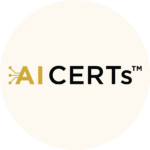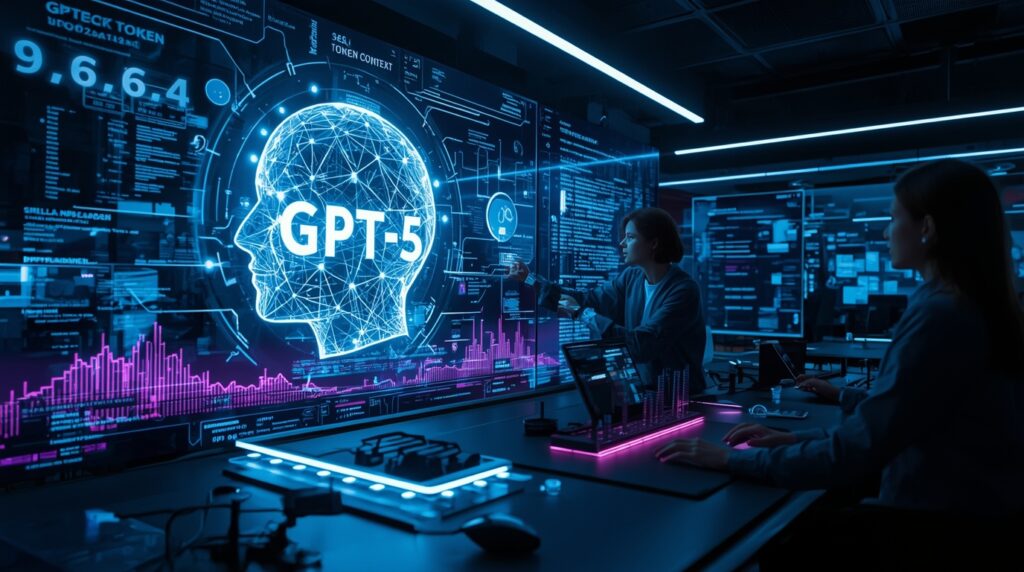
AI CERTS
3 months ago
OpenAI GPT-5: The Next Leap in AI Reasoning and Context
As enterprises, researchers, and developers rush to explore its capabilities, one thing is clear: OpenAI GPT-5 isn’t just an incremental upgrade—it’s a fundamental reimagining of what large language models can achieve.

What Makes OpenAI GPT-5 a Game-Changer
The leap from GPT-4 to OpenAI GPT-5 is not just about bigger models or more parameters. It’s about smarter, more reliable, and more context-aware AI. This new generation incorporates:
- 256K token context support, enabling it to recall and process massive amounts of data in a single session.
- Reasoning enhancements that bring its analytical capabilities closer to human-level problem-solving.
- Safer completions that reduce hallucinations and minimize harmful outputs.
- Agentic behavior improvements, making it capable of multi-step task execution with less human intervention.
According to OpenAI engineers, GPT-5 was trained with both expanded datasets and improved alignment techniques, ensuring that its outputs are not just intelligent but also trustworthy.
The Power of a 256K Token Context Window
The 256K token context is perhaps the most immediately impactful feature for professionals. For perspective, this allows GPT-5 to handle the equivalent of over 500 pages of text in one go—ideal for analyzing entire codebases, processing long legal contracts, or summarizing multiple research papers.
Such capacity opens the door for more seamless workflows in industries like law, finance, healthcare, and enterprise software. For example, a legal researcher could feed in entire case histories and receive nuanced, context-aware analyses.
This is where professional upskilling becomes critical—AI specialists who complete programs like the AI+ Data™ Certification will be best equipped to leverage large-context AI in data-heavy environments.
Reasoning Enhancements for Complex Problem Solving
Beyond raw context power, OpenAI GPT-5 introduces deep reasoning enhancements. These improvements enable the model to:
- Break down problems into logical steps.
- Identify and address gaps in information.
- Offer more grounded, evidence-based answers.
For example, in coding scenarios, GPT-5 can now plan a software architecture, generate modular code, and then cross-check the output for potential vulnerabilities before deployment.
Businesses looking to integrate these capabilities at scale will benefit from leadership with technical expertise, such as those who hold the AI+ Executive™ Certification.
Safety and Alignment: Smarter, Not Just Faster
One of the most pressing challenges in AI has been ensuring that models produce safe completions. GPT-5 uses refined reinforcement learning with human feedback (RLHF) and enhanced alignment layers to reduce biases, avoid dangerous outputs, and maintain accuracy over longer conversations.
Early tests show a significant drop in hallucination rates compared to GPT-4, making it more reliable in high-stakes applications like medical advice, legal consultation, and scientific research.
Agentic Behavior and Autonomous Task Execution
The integration of agentic behavior transforms GPT-5 from a reactive assistant into a proactive collaborator. It can now:
- Chain multiple reasoning steps to accomplish complex objectives.
- Automatically retrieve relevant information before responding.
- Monitor its outputs for accuracy and safety.
For instance, in project management, GPT-5 could create a project timeline, assign resources, and adapt the plan in real time based on incoming data. Professionals seeking to master these workflows could benefit from the AI+ Project Manager™ Certification.
Industry Impacts of OpenAI GPT-5
The arrival of OpenAI GPT-5 is already causing ripples across industries:
- Education – Personalized tutoring systems can now remember months of student interaction and tailor learning plans with greater precision.
- Healthcare – AI-driven patient records analysis can process years of medical history in one conversation.
- Finance – Advanced market simulations and in-depth portfolio analysis become more accessible to everyday investors.
- Enterprise Software – Context-aware coding assistants dramatically cut development time.
In all cases, the 256K token context is proving to be a game-changing feature, as it allows unprecedented scale and detail in AI-driven workflows.
Developer Opportunities and Challenges
For developers, OpenAI GPT-5 offers an immense opportunity—but also a learning curve. Leveraging its capabilities requires an understanding of:
- Efficient prompt design for large-context models.
- Strategies for managing token costs in commercial applications.
- Fine-tuning and API integration to optimize reasoning workflows.
Those who can combine domain expertise with AI operational skills will be in especially high demand, as businesses increasingly turn to GPT-5 for competitive advantage.
Ethics and Responsible AI Deployment
With great capability comes great responsibility. OpenAI has emphasized that GPT-5’s improvements in safe completions are just the beginning. The AI community still faces challenges around:
- Preventing misuse in generating harmful content.
- Maintaining transparency in AI reasoning steps.
- Ensuring fair access to advanced AI tools.
Industry leaders are calling for broader adoption of ethics-focused training to ensure AI deployment is responsible. Certifications like AI+ Ethics™ are becoming critical benchmarks for AI practitioners and executives alike.
The Competitive Landscape
While OpenAI is leading the charge with GPT-5, competition from Anthropic, Google DeepMind, and Meta continues to heat up. Each company is racing to enhance reasoning, expand context windows, and improve agentic behaviors.
However, OpenAI’s early lead in releasing a 256K token context model gives it a significant advantage, especially in enterprise adoption, where memory and context retention are crucial.
The Road Ahead for OpenAI GPT-5
OpenAI has hinted at several future enhancements for GPT-5, including:
- Real-time multimodal reasoning that integrates text, images, audio, and video.
- Expanded context beyond 256K tokens for specialized enterprise needs.
- Further alignment research to make completions even safer and more transparent.
In the meantime, developers, enterprises, and researchers are already finding ways to push GPT-5 to its limits. The consensus? This is a leap forward that sets the stage for a new era of AI-driven productivity.
Conclusion
The launch of OpenAI GPT-5 marks a pivotal moment in the evolution of artificial intelligence. With reasoning enhancements, a groundbreaking 256K token context, more reliable safe completions, and advanced agentic behavior, it’s not just a tool—it’s a transformative force across industries.
As organizations scramble to integrate these capabilities, the competitive advantage will belong to those who not only adopt GPT-5 early but also train their teams to harness its full potential.
If you found this analysis insightful, you’ll enjoy reading "OpenAI Employee Bonuses Reach $1 Million Amid AI Talent Wars".



